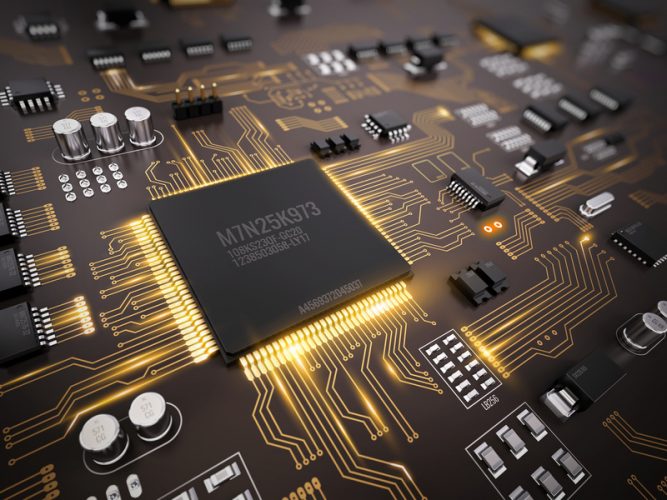Power Supply Price – Power is the backbone of any electronic system and the power supply is what feeds the system. Choosing the right supply can be the critical difference between a device working at optimum levels and one that may deliver inconsistent results.
In addition to alternating current (AC) to direct current (DC) power supplies, DC-to-DC converters are also available. If DC is already available in your system, a DC-to-DC converter may be the better design choice than AC discussed below.
Direct current power supplies are either unregulated or regulated. Regulated supplies come in several options including linear, switched, and battery-based.
Here, in this blog, we will get to know about the types of power supply and the price of power supply.

Power Supply: Converting Electrical Supply to Electrical Loads
The power supply circuit can be implemented across multiple electronic as well as electrical devices. This equipment can be classified into different types, depending upon the power they utilize for circuits and devices. Underneath, you will analyze the step-by-step conversion of 230V AC to 12V DC:
- A transformer (step-down) converts 230V AC into 12V.
- To convert AC to DC, a bridge rectifier is used.
- There is a capacitor to filter AC ripples and push them to the voltage regulator.
- Moreover, the voltage regulator regulates the voltage to 5V, and the pulsating waveform is taken using the blocking diode.
This equipment is the hardware component that provides the power to an electrical device. It converts the current from AC (alternating current) to DC (direct current), by receiving the power from an electrical outlet which is what the computer requires. To an adequate amount, it also regulates the voltage which allows the computer to run smoothly without overheating.
By simply finding the input you can locate the power supply on a system unit where the power cord is plugged in. Into several sections or building blocks, power supply electronics circuits can be split. To the operation of the power supply, each is important but each section of the power supply electronics is required to perform its function satisfactorily for the successful operation of the whole unit.
A power supply is an electronic device that supplies electric energy to an electrical load. The primary function of a power supply is to convert one form of electrical energy to another and, as a result, power supplies are sometimes referred to as electric power converters.
Types of Electronics Power Supply
When it comes to a power supply then three classifications can be used. All these have their advantages and disadvantages and under slightly different circumstances, each is used.
Here are the three major types of electronics power supply are:
- Rectified and smoothed power supply – These electronic power supplies are generally used for non-critical applications and are known as the simplest types where performance is not a major issue. In thermionic valve or vacuum tube equipment, this type of power supply was widely used and often the requirements were not so critical and were not so easy to regulate supplies.
- Linear-regulated power supply – This type of electronic power supply is capable of providing a very high level of performance. The LPS or LR circuit is demanded in multiple electrical systems for supplying the DC. It can be comparatively inefficient, dissipating a significant proportion of the input power as heat as it uses a series regulator element. Nevertheless, with low values of ripple, etc, these power supplies can offer very high levels of regulation.
- Switch-mode power supply – In this form of power supply, electronic circuits use switching technology to regulate the output. An SMPS power system hosts a switching regulator to convert electrical power. This equipment also transmits the power from DC source to DC loads.
- Although spikes can be contained in much smaller packages than their linear equivalents, as these are present on the output, they offer very high levels of efficiency.
Power Supply Price
As everyone is aware, fluctuating AC input voltage can be harmful. Power supplies are used to transform AC voltage into a secure, reliable, and continuous DC output voltage. What matters to consider while choosing a power supply is the real question, though. We will examine important factors in today’s episode to help you choose the best one for your application.
The input voltage, output voltage, and output power capacity should be your main selection factors when picking a power supply. You typically have two options for input voltage: 230-480 V three-phase, or the most popular option, 120-240 V single-phase. The power supply could malfunction as a result of improper input voltage application. There are two common output voltages: 12 V and 24 V, with 24 V being the most prevalent. Your delicate and costly equipment, such as PLCs, could potentially be harmed by improper output voltage application.
The Price of Power supply depends on factors such as input voltage, output voltage, and output power capacity. The power supply price begins from a range of ₱ 15.00 to a range of ₱ 279.00.
Conclusion
As mentioned above, Circuitrocks provides the details about power supply equipment Philippines, as the power supply devices are an important element in many items of electronic equipment. There are different sorts of equipment some are battery-driven, others need mains power supplies, and the power supply electronics circuitry and design are of paramount importance to the successful operation of the whole equipment. Above you can get into the details and learn more in-depth about these power supply devices and their prices.
FAQs on Power Supply Price
Q1. What is the PSU of a CPU?
A: A power supply unit (PSU) converts mains AC to low-voltage regulated DC power for the internal components of a computer. Moreover, Modern personal computers universally use switched-mode power supplies. Some power supplies have a manual switch for selecting input voltage, while others automatically adapt to the main voltage.
Q2. How many volts is a PSU?
A: The power supply used is a Switched Mode Power Supply or SMPS. However, the typical voltages supplied are 3.3V, 5V and 12V. 3.3V and 5V are typically used by the digital circuits whereas 12V is used by the motors in disk drives and fans.
Q3. How do I check my PSU?
A: To test your PSU:
- Shut off your PSU.
- Unplug all cables from the PSU except for the main AC cable and the 24-pin cable.
- Locate pin 16 and pin 17 on your 24-pin cable.
- Bend your paper clip so the ends can be inserted into pin 16 and pin 17.
- Turn on the PSU.
- See if the PSU fan turns.



